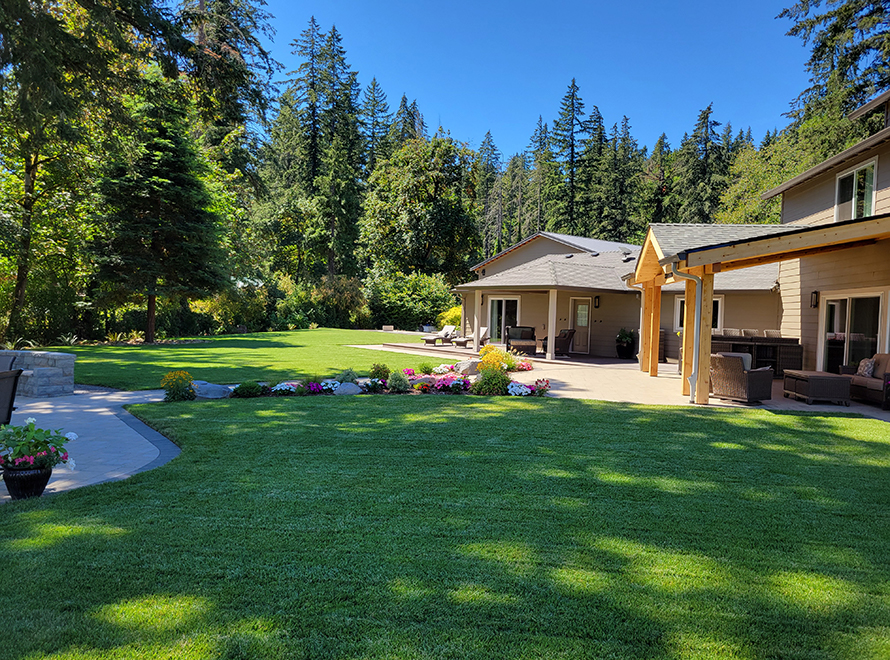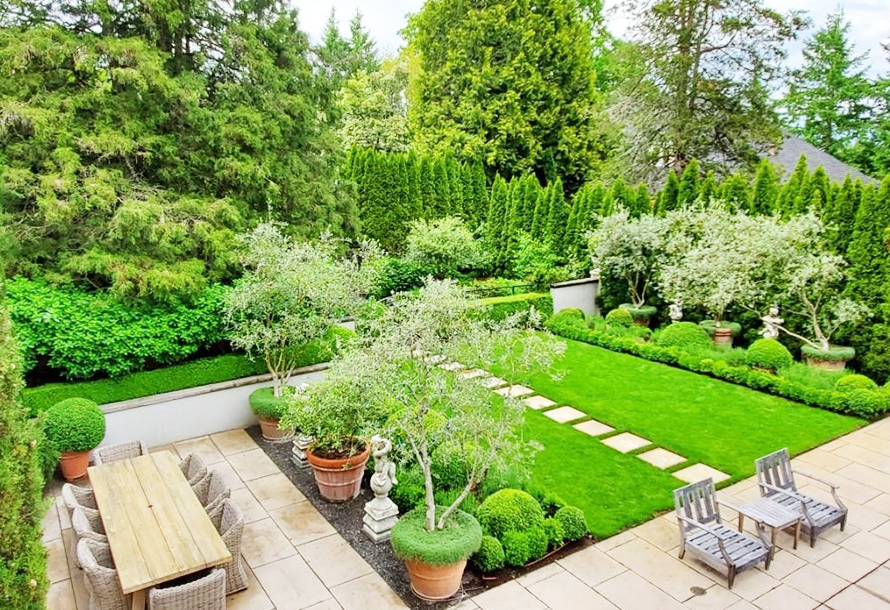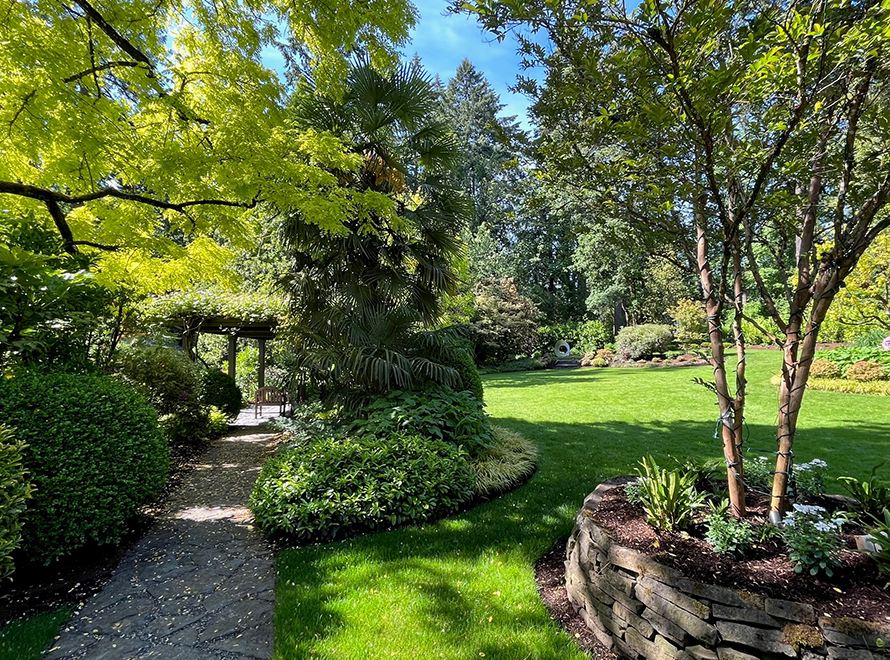Rescue For A Brown Lawn

This may be the time of year when your landscape turns from lush lawn to scorched earth. After months of no rain and high temperatures, all living things are beginning to crave a little moisture. If your grass has gone brown, there’s not much you can do about it now, but wait for those first rainy days to bring it back to life. However, with some strategic planning, you can keep that landscape green throughout next year’s dry season. Contact Landscape East & West’s experts when you need some help to return to green.
Grass Types
A perfect lawn starts with the type of grass you plant. Tall Fescue and Perennial Rye are tried and true in lasting through the summer drought conditions of the Pacific Northwest. Tall Fescue is drought-resistant, shade-tolerant has a lower nitrogen requirement, and it needs less water. That means it’s an eco-friendly choice as well. Perennial Ryegrass grows well year-round, is disease-resistant, and establishes quickly. It requires more sunlight than Tall Fescue but for yards with both sun and shade conditions, a mix of Perennial Ryegrass and fine Fescue can be the solution.
Irrigation
Irrigation is what makes the difference between the yards that have green grass and those that don’t. A lawn needs an inch to an inch and a half of water every week. To keep an even green appearance requires proper irrigation with head-to-head coverage. That means the water hits every part of your lawn and you avoid random brown spots. The goal is to have each droplet hit a blade of grass.
Water pressure is also important. If the pressure is too high, the water will just mist into the air or run into the sidewalk. High pressure can also cause problems from overwatering. Too much water will suffocate the grass and stunt root growth. Tall Fescue grass varieties tend to turn yellow if they get too much water.

To prevent runoff on sloped properties, we recommend the irrigation system run a cycle and soak program, running half of the scheduled watering time, shutting down for 30 minutes to an hour and then completing the scheduled time. This allows the water to penetrate deep into the soil encouraging the grass roots to extend down into the soil to absorb it. The deeper the roots the healthier the grass. Watering in longer increments may only lead to runoff and water that pools on the ground’s surface.
With today’s Smart irrigation systems, there’s little room for error. The systems can be programmed to water at the ideal pressure, time, and height requirements for your landscape. Our irrigation team can replace your old system with a Smart system, program it correctly for your yard’s needs, and return regularly to make adjustments. We offer our Premium Water Management Services to keep your entire irrigation system flowing smoothly.
Fertilizing
Fertilizing is a critical component in lawn care and often isn’t done frequently enough to do what it’s supposed to. Look for fertilizers with a nitrogen content of 18-24% and plan to fertilize every 8-10 weeks. A lawn needs about 5 lbs of nitrogen annually to really thrive. The nitrogen is what makes lush green lawns. However, fertilizer won’t help if the lawn has already turned brown.
Aeration
Just as healthy lawns require water and fertilizer they also need proper aeration to allow air and moisture into the ground to keep the soil loose. Between the soil and grass blades is a layer of debris called thatch that helps to make the grass more resilient to temperature extremes and wear. But too much thatch can cause brown spots and weaken the root system. Grass roots cannot easily penetrate compacted, hard soil and a weak root system will leave you with an unhealthy lawn. Aeration and dethatching go a long way towards good drainage and in keeping your grass green.

Pests
If you’re watering regularly and the grass still turns brown, pests may be to blame. Unhealthy lawns are susceptible to insect infestations that can destroy the root systems. Grubs and larvae are the usual suspects when brown spots appear due to pests. However, a fungus may also be to blame. Fungus can sprout if the soil lacks nitrogen, if there’s poor air circulation, or if hot, humid conditions from overwatering persist. The simple solution is to dethatch, aerate, fertilize and water properly.
Consider Alternatives
It used to be that a sprawling green lawn was what everyone wanted in their yard—the ideal area for kids and pets to play, to set up lawn chairs for a gathering of friends, and to place the badminton net and the croquet course. While a beautiful green lawn is still something some aspire to, there are alternatives today that are a bit more drought-tolerant and require a little less care.

Consider breaking up the expanse of lawn, with some planting beds, trees, a water feature, or a patio. Alternatives to traditional lawns that require less water and other inputs that tend to stay green throughout the summer are clover or Herniaria glabra lawns. There are many options for outdoor living spaces that meet your needs and still add beauty to your home.
Whether you need help to restore your lawn or want to further discuss landscape options, the team at Landscape East & West offers complete lawncare services and much more. Contact us for a free consultation and let’s make your yard the envy of the neighborhood.
